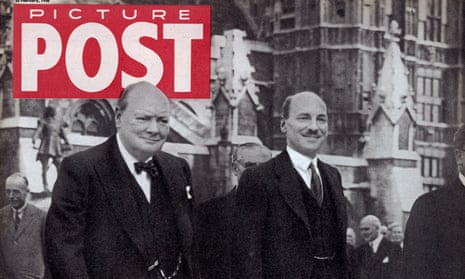With photo-editing software and deepfakes continuing to steadily erode trust in visual media, it feels almost alien to hark back to a time of reverential interest and belief in photographs – when they held a totemic power to broaden worldviews and shape politics. With photospread succinctness, Rob West’s inspiring documentary about the British news magazine Picture Post, which was published between 1938 and 1957, lays out the case for its pioneeringly demotic photojournalism, high artistic credentials and impact on public policy.
Picture Post was the brainchild of Hungarian émigré Stefan Lorant, whose editorship of German magazine Münchner Illustrierte Presse led to Hitler imprisoning him. He brought his antifascist, socialist sympathies with him to Britain – as well as a troupe of superb photographers, schooled by the European photojournalist tradition and able to frame these islands with an outsider’s eye. Selling nearly two million copies a week by the mid-40s, it featured itinerant jobseekers, sex workers, blitz firefighters and so on, socially conscious chronicling of day-to-day life that was also unafraid to make clear entreaties to those in power. After the war, the magazine canvassed readers about what kind of healthcare they would like to see.
Threading through all this work was a unique photojournalistic sensibility that West – with the help of archival and new interviews with contributors, including Grace Robertson, who died this year – argues was hothoused at the Post, the sense of innate drama in incidental details of every frame drummed in by Lorant. It would have been interesting, though, to hear more about Lorant’s testy relationship with publisher Edward Hulton, and the underlying establishment allegiances that saw Lorant’s successor ousted after trying to expose UN abuse of Korean prisoners of war. Afterwards, the magazine declined into a bland, glamour-obsessed rag that foreshadowed modern celebrity publications. But it was already a touchstone for all forms of British photography – as a host of modern-day practitioners make clear in this chipper tribute.

Comments (…)
Sign in or create your Guardian account to join the discussion